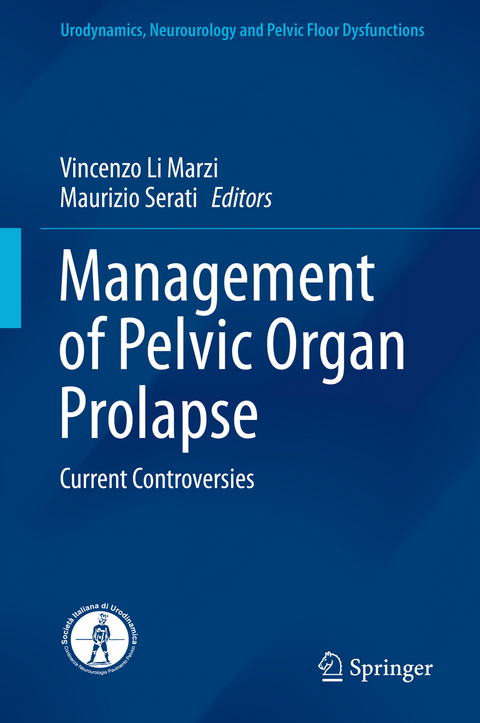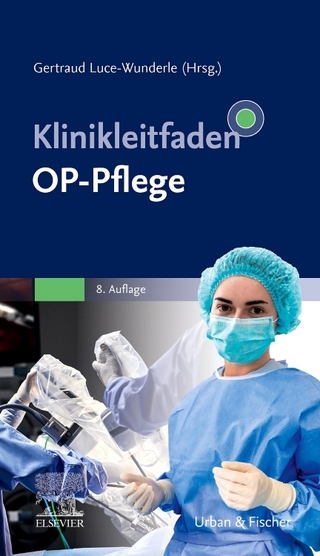
Management of Pelvic Organ Prolapse
Springer International Publishing (Verlag)
978-3-319-59194-0 (ISBN)
This book provides a comprehensive and up-to-date overview of the surgical treatment of pelvic organ prolapse, focusing especially on issues that continue to arouse controversy. In the first section, leading experts present detailed information on the surgical anatomy, pathophysiology, and epidemiology of prolapse and also the impact of concomitant functional disorders. The second section focuses on diagnostic work-up and the third is dedicated to the various treatment options aimed at resolution of the condition. The closing chapters discuss outcome measures and analyze the effects of prolapse surgery on urinary, bowel, and sexual symptoms.
In 1966 Richard TeLinde stated that, "Every honest surgeon of extensive and long experience will have to admit that he is not entirely and absolutely satisfied with his long-term results of all his operations for prolapse and allied conditions." Although many uncertainties in the field have since been resolved, some major issues still require clarification. Often it can be difficult to find the right balance between treatment effectiveness in the long term and risk reduction, including with respect to complications. This book will help trainees and less experienced surgeons to make appropriate treatment choices and achieve optimal outcomes.
Vincenzo Li Marzi is a urologist experienced in renal transplantation, female urology, functional urology, and the treatment of urinary stones. Dr. Li Marzi graduated from the School of Medicine at the University of Pisa, Italy and then completed his specialization at the Post-graduate School of Urology, University of Florence in 1998. He gained fellowship experience at the Renal Transplantation Center at Fundacio Puigvert, Barcelona, Spain and the Lahey Clinic, Boston, Massachusetts, USA. Since 2001 he has worked at A.O.U. Careggi in Florence, initially in the Spinal Unit and then in the Department of Urology. Dr Li Marzi is contract professor of functional urology within the residency program in Urology of the university of Florence. Currently he is member of the Executive Board of the Italian Society of Urodynamics (SIUD) and, from 2015 society treasurer. He serves as reviewer for European Urology and European Urology Focus. He is the author of more than 150 national and international publications.Maurizio Serati is Assistant Professor of Obstetrics and Gynecology in the Faculty of Medicine, University of Insubria, Varese, Italy. Dr. Serati graduated with a Bachelor of Medicine and Surgery, cum laude, from the University of Insubria in 1998 and subsequently completed his specialization, cum laude, at the university’s Postgraduate school of Obstetrics and Gynecology in 2005. In total, he has performed more than 1500 major operations. Dr. Serati is a member of the editorial/executive boards for a number of journals and scientific organizations, including European Urology, the European Journal of Obstetrics and Gynecology, the Italian Society of Urodynamics, and the International Continence Society. He is also a reviewer for many leading journals and is the author of more than 120 articles in peer-reviewed journals cited in PubMed.
Part 1: General Remarks.- 1. Surgical Anatomy for the Reconstructive Pelvic Surgeon.- 2. Pelvic Organ Prolapse: Pathophysiology and Epidemiology.- 3. Concomitant Functional Disorders in Genito-Urinary Prolapse.- Part 2: Diagnostic Work-up.- 4. Clinical Evaluation and Diagnostic Tools in Women with Prolapse.- 5. Urodynamic Prolapse Assessment: When and Why.- Part 3: Treatment Options.- 6. Pelvic Floor Muscle Training and Prolapse: Prevention or Treatment?.- 7. Pessary: A Rediscovered Tool.- 8. Fascial Surgery Repair for Prolapse.- 9. Sacrocolpopexy: Conventional Laparoscopic Versus Robot-assisted Approach.- 10. Transvaginal Mesh Repair for Pelvic Organ Prolapse: Toward a New Era.- 11. Posterior Prolapse Repair: Traditional, Transanal, and Employing Mesh-graft.- 12. The Role of Hysterectomy in Genito-Urinary Prolapse.- Part 4: Outcome and Follow-up.- 13. Prolapse Surgery and Outcome Measures.- 14. Urinary, Bowel and Sexual Symptoms after POP surgery.
"This pocketbook provides the reader with a good overview of POP management and related controversies. Urologists and gynaecologists will also find it contains explicit figures and practical advice." (European Urology Today, Vol. 30 (05), October-December, 2018)
“This pocketbook provides the reader with a good overview of POP management and related controversies. Urologists and gynaecologists will also find it contains explicit figures and practical advice.” (European Urology Today, Vol. 30 (05), October-December, 2018)
| Erscheinungsdatum | 27.05.2018 |
|---|---|
| Reihe/Serie | Urodynamics, Neurourology and Pelvic Floor Dysfunctions |
| Zusatzinfo | XII, 178 p. 55 illus., 42 illus. in color. |
| Verlagsort | Cham |
| Sprache | englisch |
| Maße | 155 x 235 mm |
| Gewicht | 444 g |
| Themenwelt | Medizin / Pharmazie ► Medizinische Fachgebiete ► Chirurgie |
| Medizin / Pharmazie ► Medizinische Fachgebiete ► Gynäkologie / Geburtshilfe | |
| Medizin / Pharmazie ► Medizinische Fachgebiete ► Urologie | |
| Schlagworte | Fascial surgery • Functional disorders • Hysterosacropexy • Pelvic floor muscle training • Posterior repair • Transvaginal mesh repair • treatment complications • Urodynamic assessment • Vaginal atrophy • Vaginal pessary • vaginal prolapse |
| ISBN-10 | 3-319-59194-0 / 3319591940 |
| ISBN-13 | 978-3-319-59194-0 / 9783319591940 |
| Zustand | Neuware |
| Haben Sie eine Frage zum Produkt? |
aus dem Bereich


